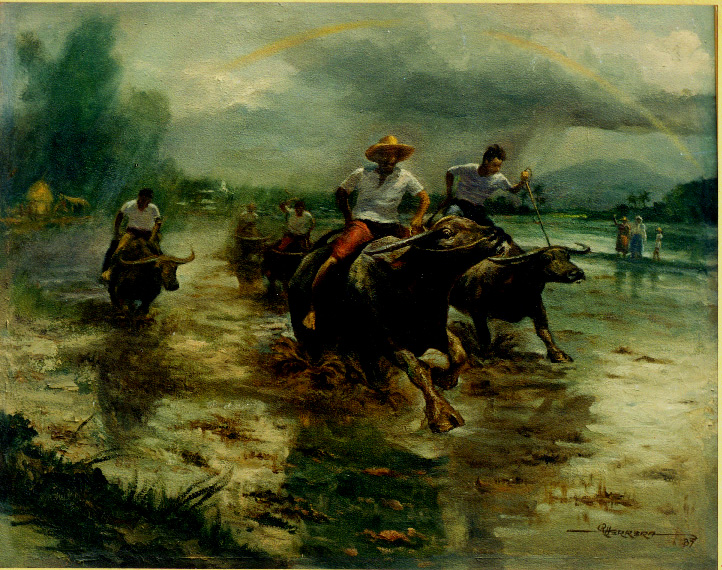



The Philippines is a culture in which East meets West. The Filipino people have a distinct Asian background, with a strong Western tradition. The modern Filipino culture developed through influence from Chinease traders, Spanish conquistadors, and American rulers. Filipino people tend to be very hospitable, especially to Western visitors (1). Because of their strong ties to Spanish culture, Filipinos are emotional and passionate about life in a way that seems more Latin than Asian (1). This is easily seen in the works of comporary artists such as Rody Herrera in his painting Unahan Sa Duluhan.
The family is the basic and most important aspect of Filipino culture. Divorce is prohibited and annulments are rare (2). The family is the safety net for indivuduals, especially older people, during difficult economic times. Children will often stay with their parents into adulthood, only leaving when they get married (2). Political and business ties are often influenced by family relationships (2).
Two traits that many foreign visitors often have a difficult time understanding are Pakikisama and Utang na Loob. Pakikisama roughly means "getting along" and requires individuals overlook slight improprieties or indiscretions for the sake of preserving peace within the family, personal, or business relationship. Utang na Loob refers to the custom of paying back one favor with another (2). These traits emphasize the importance that Filipino people place on maintaining pleasant interpersonal relationships and puting the needs of the group ahead of the individual.
More than 80% of the population of the Philippines is Roman Catholic. Fiestas in honor of the patron saint of a town are quite common. Criticism of the Catholic church is not taken lightly - and should be avoided (2).
In the Philippines, people greet each other with a handshake. A smile or raised eyebrows can mean "Hello" or "Yes". Someone can be summoned with a downward wave of the hand (3).
Anyone with a valid passport (from a country in which the Philippines has diplomatic relations) may enter the Philippines for up to 21 days without a visa. All travelers should keep in mind, however, that is costs P500 to leave the country.
The Philippines has much to offer tourists and sight-seerers: mountains, beaches, caves, and markets filled with exotic goods. Hotels range in price from about $50.00 per night to several hundred dollars per night. A tax of 15% is added to the cost of each room.


